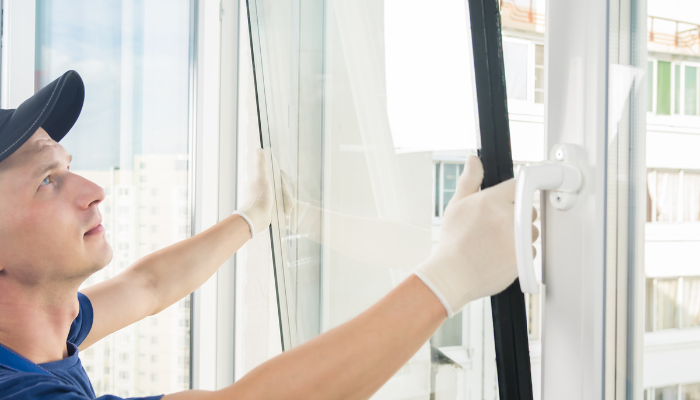When it comes to updating your home’s windows, you have two primary options: retrofit window replacement or full-frame window replacement. Each method has its advantages and drawbacks, and the best choice for your home depends on various factors, including your budget, the condition of your existing windows, and your overall goals for the project. In this article, we will explore the differences between retrofit and full-frame window replacement to help you make an informed decision.
What is Retrofit Window Replacement?
Retrofit window replacement, also known as insert window replacement or pocket window replacement, involves replacing the old window sash and glass while leaving the existing window frame intact. The new window is custom-made to fit into the existing frame, eliminating the need for extensive modifications to the surrounding structure.
Pros of Retrofit Window Replacement
- Cost-effective: Retrofit window replacement is generally more affordable than full-frame window replacement because it requires less labor and materials.
- Faster installation: Since the existing frame remains in place, retrofit window replacement typically takes less time to complete compared to full-frame window replacement.
- Minimal disruption: Retrofit window replacement causes minimal disruption to your home, both inside and out, as there is no need to remove the existing frame or trim.
- Energy efficiency improvements: Retrofit window replacement can improve your home’s energy efficiency by replacing old, drafty windows with modern, energy-efficient models.
Cons of Retrofit Window Replacement
- Limited to existing frame size: Retrofit window replacement is limited by the dimensions of the existing window frame, which may not be ideal if you want to change the size or style of your windows.
- Potential for hidden damage: Since the existing frame remains in place, any damage or rot within the frame may not be discovered and addressed during retrofit window replacement.
What is Full-Frame Window Replacement?
Full-frame window replacement involves removing the entire window unit, including the sash, glass, and frame, down to the rough opening. A new window, complete with a new frame, is then installed into the opening. This method provides the opportunity to address any hidden damage or issues with the existing frame and surrounding structure.
Pros of Full-Frame Window Replacement
- Complete window overhaul: Full-frame window replacement allows for a complete overhaul of your windows, including the frame and surrounding structure, ensuring a thorough update.
- Opportunity to address hidden issues: By removing the entire window unit, full-frame window replacement provides the chance to discover and address any hidden damage or rot within the frame and surrounding structure.
- Greater design flexibility: With full-frame window replacement, you have more flexibility in terms of window size, style, and design since you are not limited by the dimensions of the existing frame.
- Improved energy efficiency: Like retrofit window replacement, full-frame window replacement can improve your home’s energy efficiency by replacing old windows with modern, energy-efficient models.
Cons of Full-Frame Window Replacement
- Higher cost: Full-frame window replacement is generally more expensive than retrofit window replacement due to the additional labor and materials required.
- Longer installation time: Since the entire window unit is removed and replaced, full-frame window replacement typically takes longer to complete compared to retrofit window replacement.
- More disruption: Full-frame window replacement can cause more disruption to your home, both inside and out, as the existing frame and trim must be removed and replaced.
Which Window Replacement Method is Right for You?
When deciding between retrofit and full-frame window replacement, consider the following factors:
- Budget: If budget is a primary concern, retrofit window replacement may be the more cost-effective option.
- Condition of existing windows: If your existing window frames are in good condition and free of damage or rot, retrofit window replacement might be a suitable choice. However, if there is extensive damage or structural issues, full-frame window replacement may be necessary.
- Desired window size and style: If you want to change the size or style of your windows, full-frame window replacement will provide greater flexibility.
- Energy efficiency goals: Both retrofit and full-frame window replacement can improve your home’s energy efficiency, but full-frame window replacement may offer a more comprehensive solution if there are issues with the existing frame or surrounding structure.
Retrofit and full-frame window replacements each have their advantages and drawbacks, and the best choice for your home depends on your specific needs and goals. By understanding the differences between these two methods, you can make an informed decision that will result in updated, energy-efficient windows that enhance your home’s comfort and aesthetics.

